Understanding AMR Robots: A Comprehensive Guide
This article offers an in-depth view of AMR robots, their underlying technology, and applications crucial in today's rapidly evolving technological landscape.
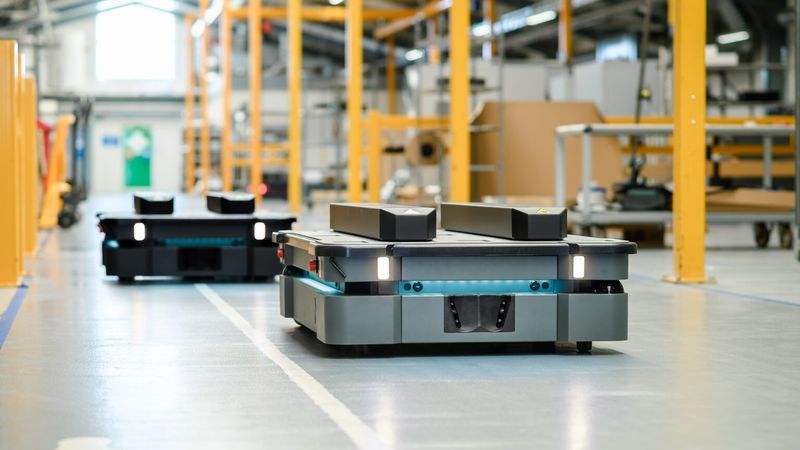
Autonomous Mobile Robots employed for material handling; Credits: Teradyne
Introduction
AMR Robots or Autonomous Mobile Robots (AMRs) are a transformative technology reshaping industries and how we think about automation. These self-navigating wonders use advanced sensors and algorithms to move through environments without human intervention. From warehouses to hospitals, AMRs are revolutionizing industries by offering efficient, flexible, and smart automation solutions. Let’s dive in to discover the magic behind these robotic marvels!
What are AMR Robots?
Autonomous Mobile Robots, or AMRs, are a class of robots designed for mobility. They can move through their environment without being confined to a fixed path or location. This significantly differs from traditional Automated Guided Vehicles (AGVs), which require predefined operating paths. AMRs, on the other hand, can navigate dynamically, adjusting their path based on the real-time data they gather from their surroundings. This means they can instantly find an alternative route if a new obstacle appears. [1]

The primary function of AMRs is to transport materials from one location to another. This can range from small items, such as components on a manufacturing line, to larger payloads, like pallets in a warehouse. However, their capabilities extend beyond simple transportation. Some AMRs have advanced features like robotic arms or other tools, enabling them to pick items or inspect.
The key components of an AMR include its mobility platform, sensors, control systems, and power supply. The mobility platform, often wheeled, allows the robot to move around. The sensors, which can include a variety of technologies such as cameras, LiDAR, and ultrasonic sensors, provide the robot with information about its environment. The control system processes this sensor data, makes decisions based on it, and sends commands to the robot's motors to control its movement. Finally, the power supply, typically a rechargeable battery, provides the energy the robot needs to operate.
While AGVs have been used in industry for many years, AMRs represent a significant advancement. The global Autonomous Mobile Robot (AMR) market is projected to reach $18.9 billion by 2032. [2] AGVs typically follow fixed paths, often using wires, magnets, or markers embedded in the floor. This makes them less flexible and adaptable than AMRs. In contrast, AMRs use sophisticated sensor arrays and algorithms to understand their environment and decide where to go. This allows them to navigate dynamically, avoiding obstacles and choosing the most efficient path to their destination. This flexibility and adaptability make AMRs a powerful tool for automation in various settings.
Recommended Reading: What is Robotics? A Comprehensive Guide to its Engineering Principles and Applications
The Technology Behind AMR Robots
Sensor Technology
The technology that powers AMR robots combines hardware and software components to enable autonomous navigation. One of the most critical components of this technology stack is the sensor technology.
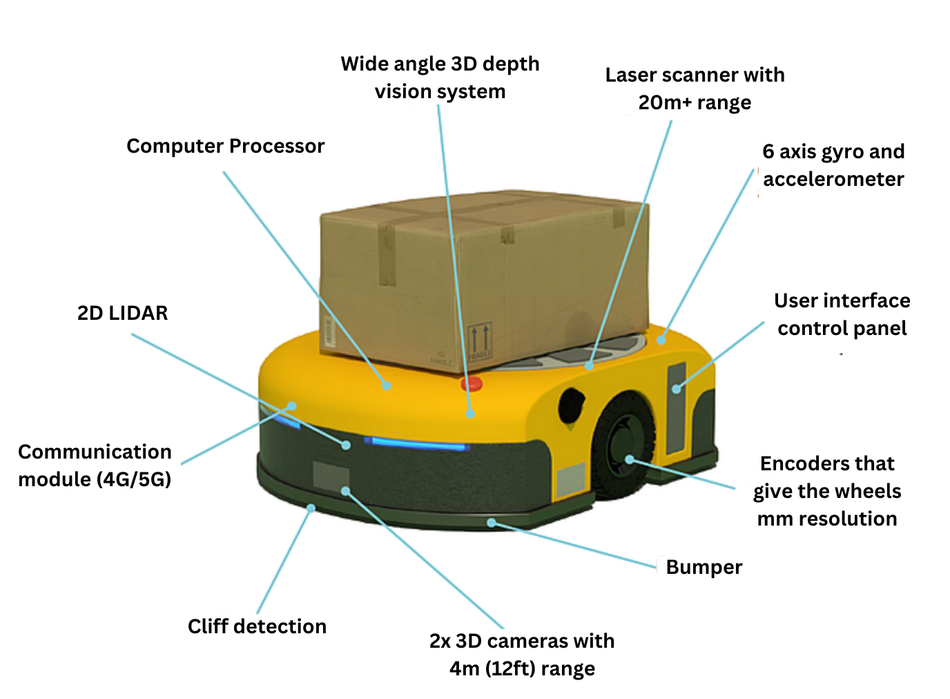
Sensors are the eyes and ears of AMR robots. They gather data about the robot's surroundings, which is then used to decide where to go and how to get there. Several types of sensor are commonly used in AMR robots, each with strengths and weaknesses. AMR sensors, i.e., anisotropic magnetoresistive (AMR) sensors, are a great option for high-precision position measurements [3].
LiDAR (Light Detection and Ranging) sensors, for example, use light pulses to measure distances to objects in the robot's environment. They can create detailed 3D maps of the environment, which the robot can use to navigate. LiDAR sensors are particularly good at detecting obstacles and can work well in various lighting conditions. However, they can be expensive and struggle with certain surfaces, such as reflective or transparent ones.
Cameras are another common type of sensor used in AMR robots. They capture visual data, which can then be processed using computer vision algorithms to identify objects, read signs, or detect lines on the floor. Cameras are relatively inexpensive and can provide a lot of detailed information. However, they depend on good lighting conditions and can struggle with fast-moving or distant objects.
Ultrasonic sensors use sound waves to detect objects. They are often used with other types of sensors to provide additional data. Ultrasonic sensors are inexpensive and can work well in a variety of conditions. However, they have a limited range and may struggle with soft or angled surfaces that absorb or deflect the sound waves.
Infrared sensors work similarly to ultrasonic sensors, but use infrared light waves instead of sound waves. They can be used to detect objects, measure distances, or detect lines on the floor. Infrared sensors are also relatively inexpensive and can work well in various conditions. However, they can be affected by ambient light and heat sources.
Each of these sensor types has its own strengths and weaknesses, and the choice of which to use depends on the specific requirements of the robot and its environment. In many cases, multiple types of sensors provide a more complete picture of the environment. This sensor fusion, as it's called, allows the robot to make more informed decisions and navigate more effectively.
Navigation Systems
Navigation systems are a critical component of AMR robots, enabling them to move autonomously through their environment. These systems use data from the robot's sensors to create a map of the environment, plan a path to the robot's destination, and control the robot's movement along that path. Artificial intelligence (AI) is playing an increasingly important role in developing and deploying autonomous mobile robots (AMRs).
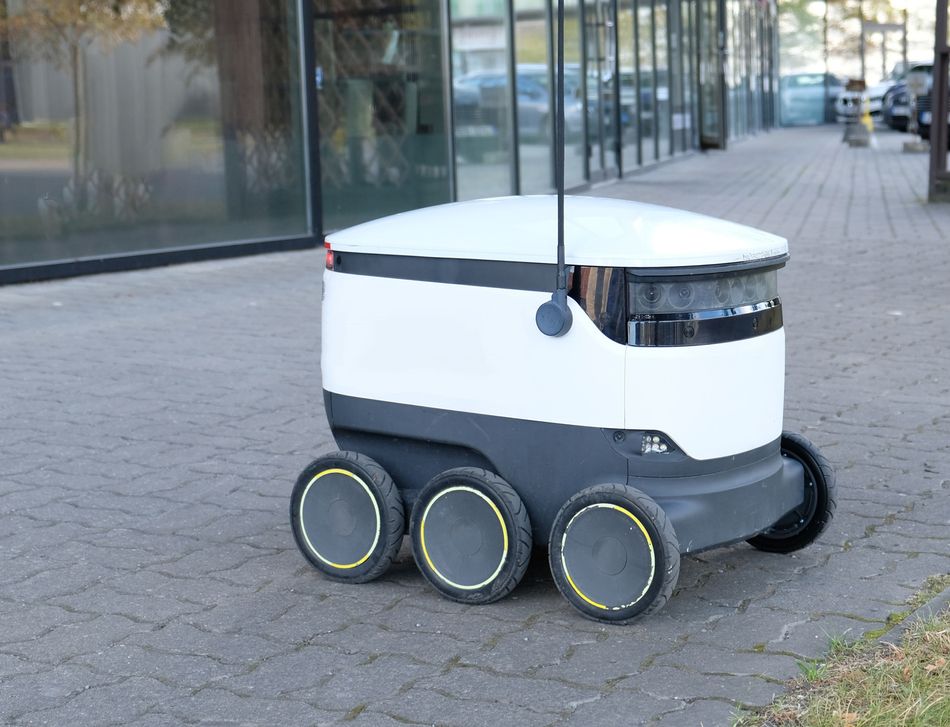
There are several types of navigation systems commonly used in AMR robots. One of the most common is SLAM (Simultaneous Localization and Mapping). SLAM algorithms use sensor data to create a map of the environment while simultaneously keeping track of the robot's location within that map. This allows the robot to navigate in unknown environments and adapt to changes in the environment.
Another common type of navigation system is waypoint navigation. In this system, the robot is given a series of waypoints, or points in the environment it must reach. The robot uses its sensors and control systems to move from one waypoint to the next, adjusting its path to avoid obstacles. Some AMRs are so advanced that they can even "communicate" with other robots to share information about obstacles or the best routes. [4]
Path planning algorithms are another key component of navigation systems. These algorithms take the map created by the SLAM system or the waypoints provided to the robot and determine the best path for the robot to take. This can involve considerations such as the shortest distance, the least energy consumption, or avoiding obstacles.
Finally, the control system takes the path provided by the path planning algorithm and sends commands to the robot's motors to move it along that path. This involves a feedback loop, where the robot's sensors provide data about its actual position and velocity; the control system compares this to the desired position and velocity and adjusts the motor commands accordingly.
The sophistication and effectiveness of the navigation system are key factors in the performance of an AMR robot. A good navigation system allows the robot to move efficiently and reliably through its environment, adapting to changes and avoiding obstacles. This is crucial for applications such as warehousing and logistics, where the robot must navigate dynamic environments and perform tasks quickly and accurately.
Recommended Reading: Lidar SLAM: The Ultimate Guide to Simultaneous Localization and Mapping
Control Systems
Control systems are an essential component of AMR robots, responsible for managing the robot's movement and ensuring it follows the desired path. These systems take input from the robot's sensors and navigation algorithms and translate it into commands for its motors and other actuators.
A key aspect of control systems is the feedback loop. This involves continuously monitoring the robot's actual position, velocity, and orientation, comparing it to the desired values, and adjusting the motor commands accordingly. This process helps the robot maintain its path and adapt to any changes in the environment or unexpected disturbances.
Several types of control algorithms are used in AMR robots, each with its own strengths and weaknesses. One common type is the PID (Proportional-Integral-Derivative) controller. This algorithm calculates the difference between the robot's actual and desired values (the error) and uses this to adjust the motor commands. The PID controller has three components: the proportional term, which is proportional to the error; the integral term, which is proportional to the accumulated error over time; and the derivative term, which is proportional to the rate of change of the error. By tuning the parameters of these three components, the PID controller can respond quickly and accurately to changes in the robot's environment.
Another type of control algorithm is model predictive control (MPC). [5] This approach involves creating a mathematical model of the robot's dynamics and using this model to predict the robot's future behavior. The control system then optimizes the motor commands to minimize the difference between predicted and desired behavior. MPC can be more computationally intensive than PID control but can perform better in some cases, particularly when dealing with complex or nonlinear systems.
Control systems also interact with other components of the AMR robot, such as the power management system. For example, the control system may adjust the robot's speed or acceleration to conserve energy or extend battery life. This can be particularly important in applications where the robot must operate for extended periods without recharging.
In summary, control systems are a critical component of AMR robots, responsible for managing the robot's movement and ensuring it follows the desired path. By using advanced algorithms and feedback loops, these systems enable the robot to navigate effectively and adapt to changes in its environment.
Recommended Reading: PID Loops: A Comprehensive Guide to Understanding and Implementation
Applications of AMR Robots
AMR robots have found applications in a variety of industries due to their flexibility, adaptability, and efficiency. The most common sectors where AMR robots are employed include warehousing and logistics, healthcare, and manufacturing. Since NASA first used them for space exploration, AMRs have become a real strategic asset for optimizing the supply chain. [6]
Warehousing and Logistics
AMR robots have become essential for streamlining operations and improving efficiency in warehousing and logistics. They can perform various tasks, such as transporting goods, picking items from shelves, and packing sortation.
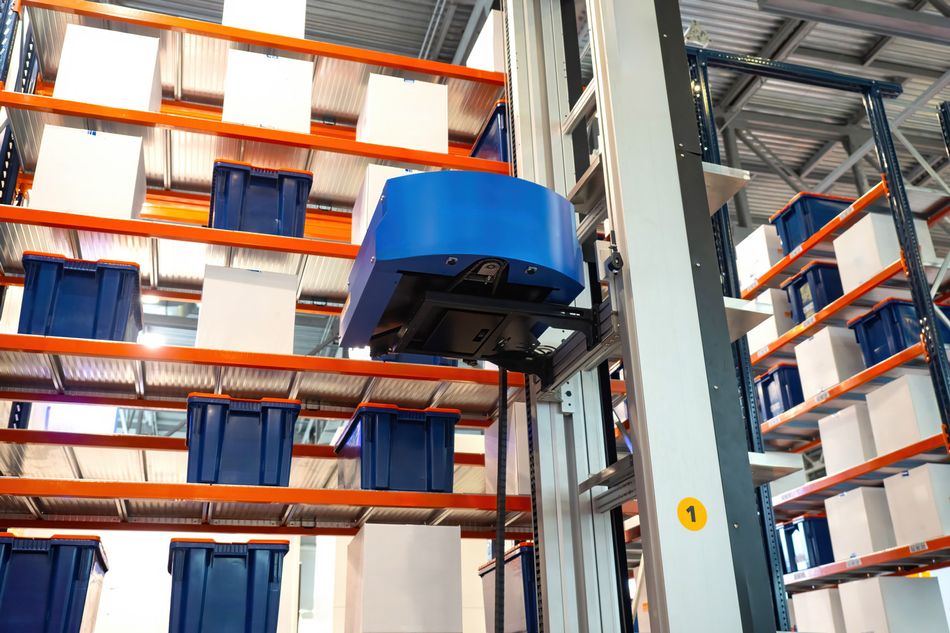
Material handling is one of the primary tasks of AMR robots in this sector. AMR forklifts are self-driving vehicles that can transport materials without a human operator. They can move products from storage areas to loading docks or from receiving areas to storage locations. This can reduce the need for manual labor and increase the speed at which goods are moved through the facility.
Another application of AMR robots in warehousing and logistics is order picking. Robots with robotic arms or grippers can pick items from shelves and place them in containers or conveyor belts. This can help improve the accuracy and speed of the order fulfillment process, reducing the likelihood of errors and increasing customer satisfaction.
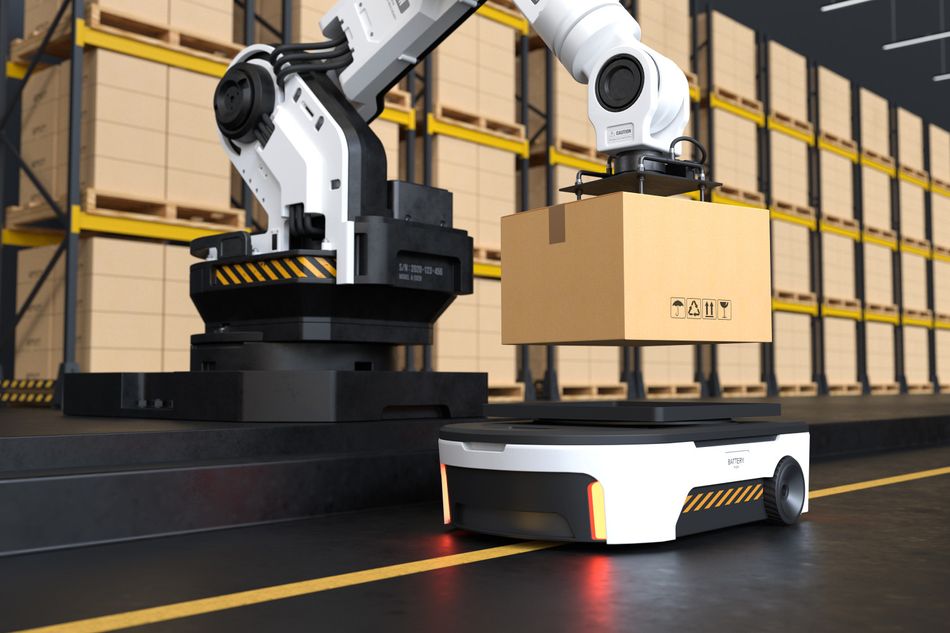
In addition to material handling and order picking, AMR robots can also be used for inventory management. They can navigate the warehouse, scanning barcodes or using computer vision to identify items and update inventory records. This can help maintain accurate inventory levels and reduce the time spent on manual inventory checks.
The use of AMR robots in warehousing and logistics offers several benefits. They can help reduce labor costs by automating repetitive tasks, improve efficiency by speeding up operations, and increase accuracy by reducing the likelihood of human error. Additionally, their ability to adapt to changes in the environment and work alongside human workers makes them a valuable asset in the ever-evolving world of warehousing and logistics.
Healthcare
According to a recent study, about 40% of a nurse’s time is spent on non-nursing, non-value-adding tasks like delivering and retrieving meal trays or performing housekeeping duties. [7] By automating these tasks, AMRs free up healthcare professionals' time, allowing them to focus on critical patient care and reducing the burden of non-value-adding activities. In hospitals, clinics, and other healthcare facilities, AMR robots can perform various tasks, from transporting medical supplies to assisting in patient care.
One common application of AMR robots in healthcare is the transportation of medical supplies and equipment. Robots can autonomously navigate hospital corridors, delivering medications, linens, or surgical instruments to different departments or patient rooms. This can reduce the workload on healthcare staff, allowing them to focus on more critical tasks and patient care.
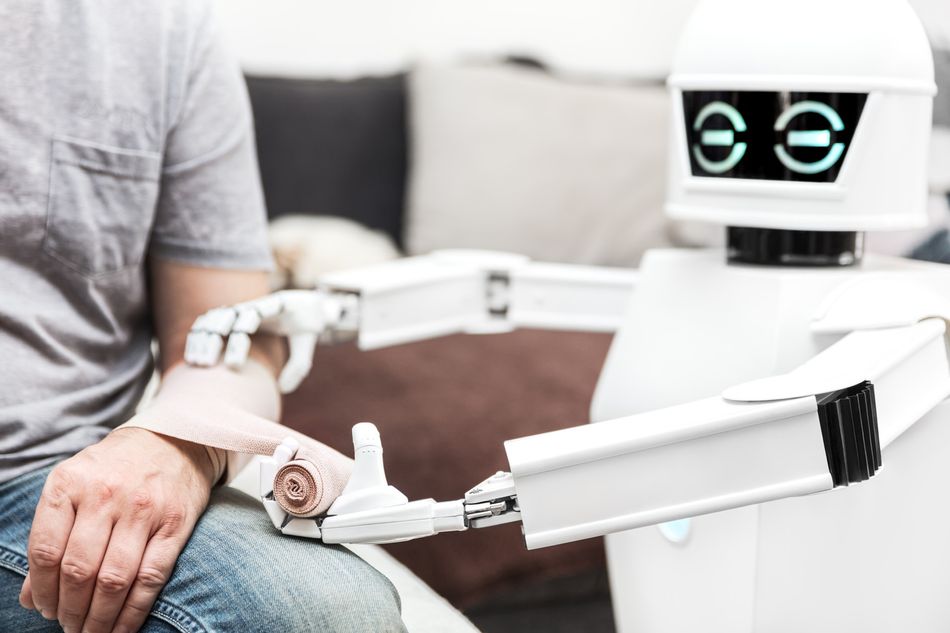
In addition to transporting supplies, AMR robots can also be used for patient care. For example, robots with cameras and sensors can monitor patients' vital signs, alerting healthcare staff if abnormalities are detected. This can help ensure that patients receive timely care and reduce the risk of complications.
AMR robots can also assist in tasks such as patient transport. Robots designed to carry patients can safely move them between different hospital areas, such as from their room to a diagnostic imaging department. This can help improve patient comfort and reduce the risk of injury for patients and staff.
Another application of AMR robots in healthcare is disinfection and cleaning. Robots with UV-C lights or other disinfection technologies can autonomously navigate hospital rooms and common areas, killing bacteria, viruses, and other pathogens. This can help maintain a clean and safe environment for patients and staff, reducing the risk of hospital-acquired infections. [8]
The use of AMR robots in healthcare offers several benefits. They can help improve efficiency by automating routine tasks, allowing healthcare staff to focus on patient care. They can also enhance patient safety by reducing the risk of infection and ensuring timely care. Furthermore, their ability to work alongside human staff and adapt to changes in the environment makes them a valuable asset in the dynamic world of healthcare.
Manufacturing
Manufacturing is another industry where AMR robots have found significant applications. Their flexibility, adaptability, and precision make them well-suited for tasks such as material handling, assembly, and inspection in manufacturing environments.
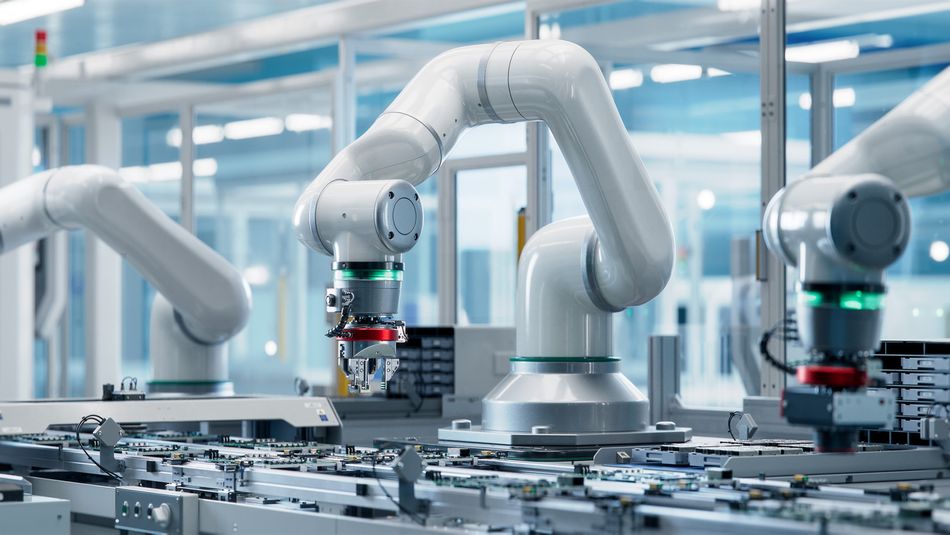
Material handling is a common application of AMR robots in manufacturing. They can transport raw materials, components, or finished products between different stages of the production process. This can streamline operations, reduce the need for manual labor, and increase overall efficiency. For example, AMR robots can move components from storage areas to assembly lines, or transport finished products from the production floor to packaging or shipping areas. [9]
In addition to material handling, AMR robots can also be used for assembly tasks. Robots equipped with robotic arms, grippers, or other tools can pick up and manipulate components, assembling them into finished products. E-commerce goods-to-person (GTP) AMR is a warehouse automation solution that uses autonomous mobile robots (AMRs) to bring products to pickers, rather than having the pickers walk to the products. This can help improve the speed and accuracy of the assembly process, reducing the likelihood of errors and defects. Furthermore, AMR robots can be easily reprogrammed or reconfigured to handle different tasks or products, making them highly adaptable to changes in production requirements.
Quality control and inspection are other important applications of AMR robots in manufacturing. Robots equipped with cameras, sensors, or other inspection tools can autonomously navigate the production floor, inspecting products for defects or deviations from specifications. This can help ensure that products meet quality standards and reduce the risk of costly recalls or customer dissatisfaction.
The use of AMR robots in manufacturing offers several benefits. They can help improve efficiency by automating repetitive tasks, reducing labor costs, and increasing the speed and accuracy of production processes. Additionally, their ability to adapt to changes in production requirements and work alongside human workers makes them a valuable asset in the ever-evolving manufacturing world.
Recommended Reading: How Assembly Line Automation is Revolutionizing Manufacturing? Types, Benefits, and Challenges
Advantages and Challenges of AMR Robots
AMR robots offer numerous advantages over traditional automation solutions, making them an attractive option for many industries. However, they also come with their own challenges that must be considered when implementing them.
Advantages
One of the main advantages of AMR robots is their flexibility. Unlike traditional automation systems, which often require fixed paths or infrastructure, AMR robots can navigate dynamically through their environment. This allows them to adapt to changes in the layout or obstacles, making them suitable for a wide range of applications and industries.
Another advantage of AMR robots is their ability to work alongside human workers. They can be designed with safety features, such as collision avoidance systems, that allow them to operate in close proximity to people without posing a risk. AMRs can lift heavy loads and transport them over large distances easily. This collaborative approach can help improve productivity and efficiency while maintaining a safe working environment.
Efficiency is another key advantage of AMR robots. Automating repetitive tasks can reduce labor costs and increase the speed at which tasks are completed. This can lead to cost-effective systems and improved productivity for distribution centers or businesses.
AMR robots also offer the potential for improved accuracy, connectivity, and consistency in their tasks. Bots and AMRs can be used to create powerful and efficient automation solutions. For example, a bot could generate a list of items that need to be picked and packed, and an AMR could be used to pick and pack those items. Advanced sensors and control systems can perform tasks with high precision, reducing the likelihood of errors and defects. This can help ensure that products meet quality standards and reduce the risk of costly recalls or customer dissatisfaction.
Finally, AMR robots can contribute to a more sustainable and environmentally friendly approach to automation. By optimizing their paths and using energy-efficient components, they can help reduce energy consumption and minimize waste. This can be particularly important in industries where energy use and environmental impact are significant concerns.
Recommended Reading: Why Industrial Robotics is Experiencing Steady Growth
Challenges
Despite the numerous advantages of AMR robots, some challenges must be considered when implementing them in various industries. These challenges can include technical, operational, and financial aspects.
One technical challenge is the integration of AMR robots with existing systems and infrastructure. [10] Businesses often invest in traditional automation solutions like AGVs or fixed conveyor systems. Integrating industrial robots into these environments may require significant modifications to the existing systems or the development of custom solutions to ensure seamless operation.
Another technical challenge is developing and maintaining the software and algorithms that control the AMR robots. These systems can be complex and require specialized expertise to develop, optimize, and maintain. Ensuring the robots can navigate effectively and safely in their environment, particularly dynamic or cluttered spaces, can be a significant challenge.
From an operational perspective, adopting AMR robots may require changes to existing workflows and processes. Employees may need to be trained to work alongside the robots and adapt to new ways of performing tasks. Additionally, businesses may need to develop new processes for monitoring and managing the robots, such as scheduling maintenance or updating software.
Financial challenges can also be a barrier to the adoption of AMR robots. While they can offer significant cost savings in the long term, the initial investment in the robots and the necessary infrastructure can be substantial. Smaller businesses or those with limited resources may struggle to justify the upfront costs, even if the long-term benefits are significant.
Finally, regulatory and safety concerns can also present challenges for implementing AMR robots. Ensuring the robots meet safety standards and comply with relevant regulations is crucial to their successful deployment. This may require additional investment in safety features, such as collision avoidance systems, or developing new safety protocols for employees working alongside the robots.
Conclusion
AMR robots represent a significant advancement in automation technology, offering flexibility, adaptability, and efficiency across various industries. Their applications in warehousing and logistics, healthcare, and manufacturing demonstrate their potential to transform how businesses operate and improve productivity. However, implementing AMR robots also comes with challenges, such as integrating existing systems, software development, and financial considerations. By understanding the technology behind AMR robots and addressing these challenges, businesses can harness the full potential of these innovative machines and stay competitive in an ever-evolving technological landscape.
FAQs
Q: What is the difference between an AMR robot and an AGV?
A: AMR robots are more flexible and adaptable than traditional AGVs, which require predetermined paths. AMRs use sophisticated sensor arrays and algorithms to understand their environment and decide where to go, allowing them to navigate dynamically and avoid obstacles.
Q: What are some common applications of AMR robots?
A: AMR robots are used in various industries, including warehousing and logistics, healthcare, and manufacturing. They can perform tasks such as transporting materials, picking items, assembling products, and inspecting for quality control.
Q: What are the main advantages of using AMR robots?
A: AMR robots offer several advantages, including flexibility, the ability to work alongside human workers, improved efficiency, increased accuracy, and a more sustainable approach to automation.
Q: What are some challenges associated with implementing AMR robots?
A: Challenges include integrating AMR robots with existing systems and infrastructure, developing and maintaining the software and algorithms that control the robots, training employees to work alongside the robots, and addressing financial and regulatory concerns.
Q: How do AMR robots navigate autonomously?
A: AMR robots use a combination of sensors, such as LiDAR, cameras, and ultrasonic sensors, to gather data about their environment. They then use navigation algorithms, such as SLAM or waypoint navigation, to map the environment, plan a path to their destination, and control their movement.
References
[1] ScienceDirect. Planning and control of autonomous mobile robots for intralogistics: Literature review and research agenda [Cited 2023 October 24] Available at: Link
[2] Alliedmarketresearch. Autonomous Mobile Robot Market [Cited 2023 October 24] Available at: Link
[3] Analog. Why AMR Sensors Are a Great Option for High Precision Position Measurements! [Cited 2023 October 24] Available at: Link
[4] JSTOR Daily. Robots That Communicate with Each Other [Cited 2023 October 24] Available at: Link
[5] Research Gate. Model Predictive Controller for Mobile Robot [Cited 2023 October 24] Available at: Link
[6] Modula. Autonomous Mobile Robots: How they work and how they can become part of a warehouse [Cited 2023 October 24] Available at: Link
[7] NCBI. Nurses’ Time Allocation and Multitasking of Nursing Activities: A Time Motion Study [Cited 2023 October 24] Available at: Link
[8] Nord Modules. AMRs in Healthcare: Revolutionizing patient care and workflow efficiency. [Cited 2023 October 24] Available at: Link
[9] Sintrones. AMR Technology Improves Manufacturing Productivity and Efficiency. [Cited 2023 October 24] Available at: Link
[10] Infinityrobotics. Overcoming common challenges in implementing robotics and automation systems. [Cited 2023 October 24] Available at: Link
